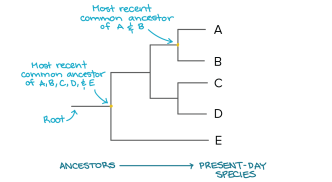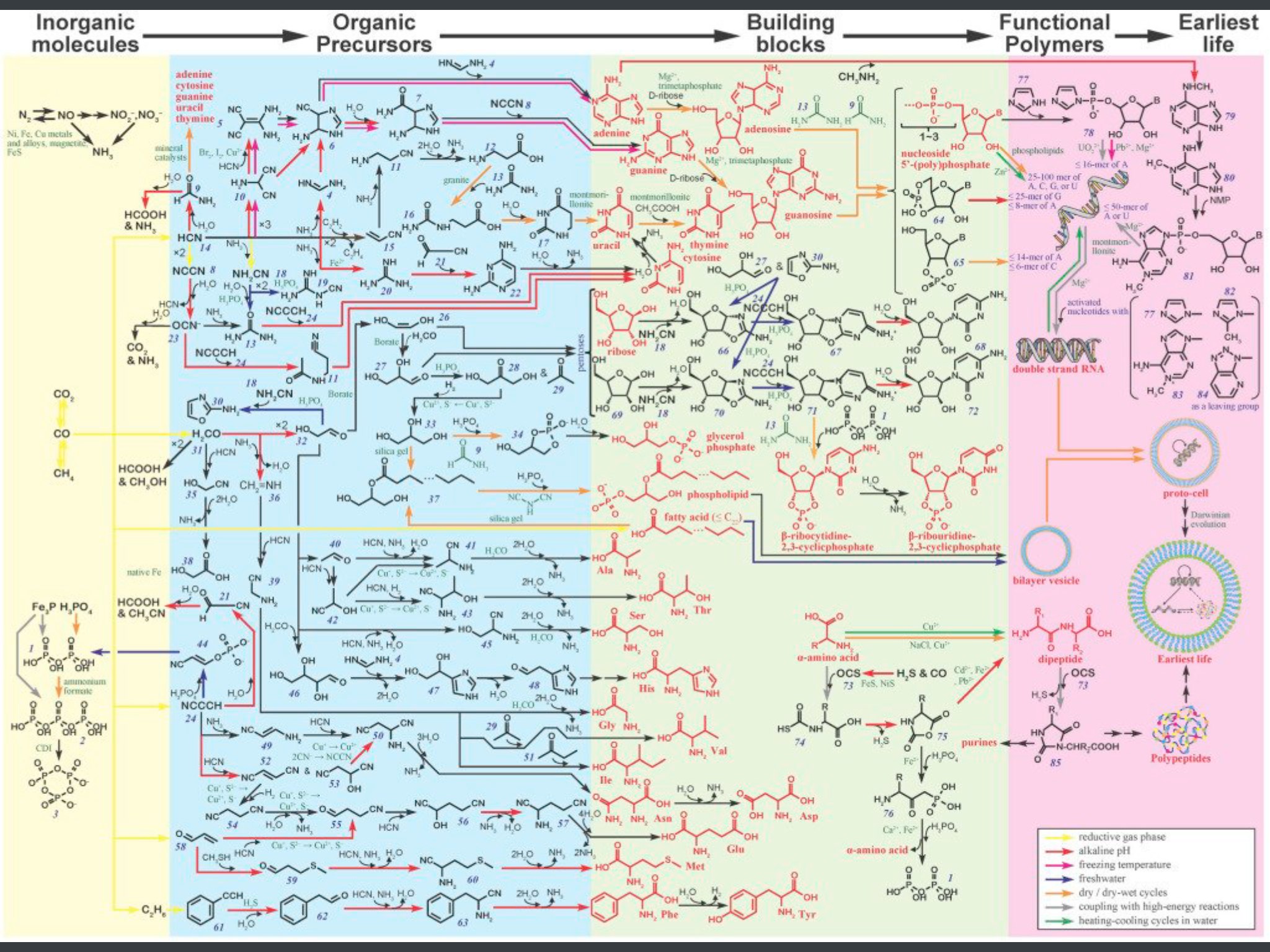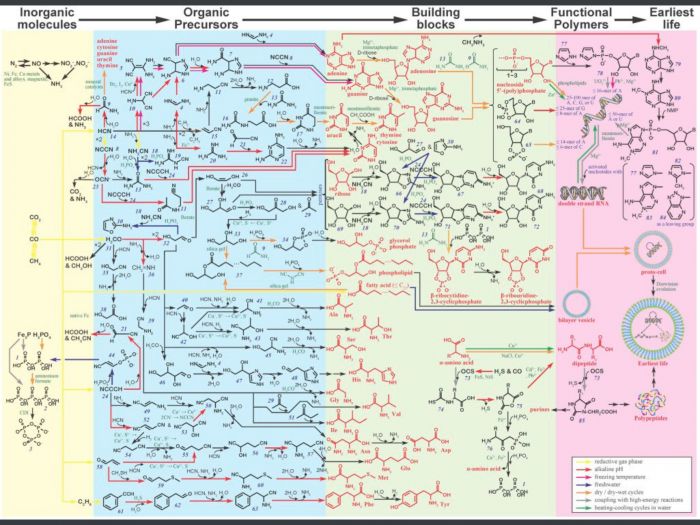We
We are all more closely related than you may think.
Historically, the development of life has always been portrayed in distinct, stepped stages. Life starts at the Root (Figure 1) and through time, evolution irons out the kinks, ultimately to make us, the most complex forms of life on the planet. But this has always left an important question, where did the Root come from?
Life is thought to have started from simple inorganic molecules (Figure 2) [1][2] and evolved in increasing complexity. Smaller particles combined to make larger more complex molecules which at some point gained the ability to replicate themselves.
This first self replicating unit is called "the replicant" as it was the first entity on earth which could replicate itself. However, even thought the replicant mechanisms were near perfect, every billion replications an error occurs, which in turn, made a new form of replicant. This process then repeated over of billion years until...us.
We are all more closely related than you think, as all life, in short, is us travelling through time!
Further reading
- The Selfish Gene - Dawkins, Richard, 1941. Oxford ; New York :Oxford University Press, 1989. ISBN: 978-0198788607
References
- ↑ Evidence for early life in Earth's oldest hydrothermal vent precipitates. Dodd, Matthew S.; Papineau, Dominic; Grenne, Tor; Slack, John F.; Rittner, Martin; Pirajno, Franco; O'Neil, Jonathan; Little, Crispin T.S. (1 March 2017). . Nature. 543 (7643): 60–64. Bibcode:2017Natur.543...60D. doi:10.1038/nature21377. PMID 28252057. Archived from the original on 8 September 2017. Retrieved 2 March 2017 via https://www.nature.com/articles/nature21377?source=post_page---------------------------.
- ↑ Crucial steps to life: From chemical reactions to code using agents. BioSystems. 140: 49–57. Witzany, Guenther (2016). doi:10.1016/j.biosystems.2015.12.007. PMID 26723230. Accessed via: https://www.sciencedirect.com/science/article/abs/pii/S0303264715002063
- ↑ Taxonomic boundary paradox as described by: Taxonomy versus evolution: János Podani Department of Plant Taxonomy and Ecology, Biological Institute, Eötvös University, Pázmány P. s. 1/c, 1117 Budapest, Hungary. TA XON 58 (4) • Published November 2009: 1049–1053. Accessed on 3 July 2022 via: https://onlinelibrary.wiley.com/doi/epdf/10.1002/tax.584001



